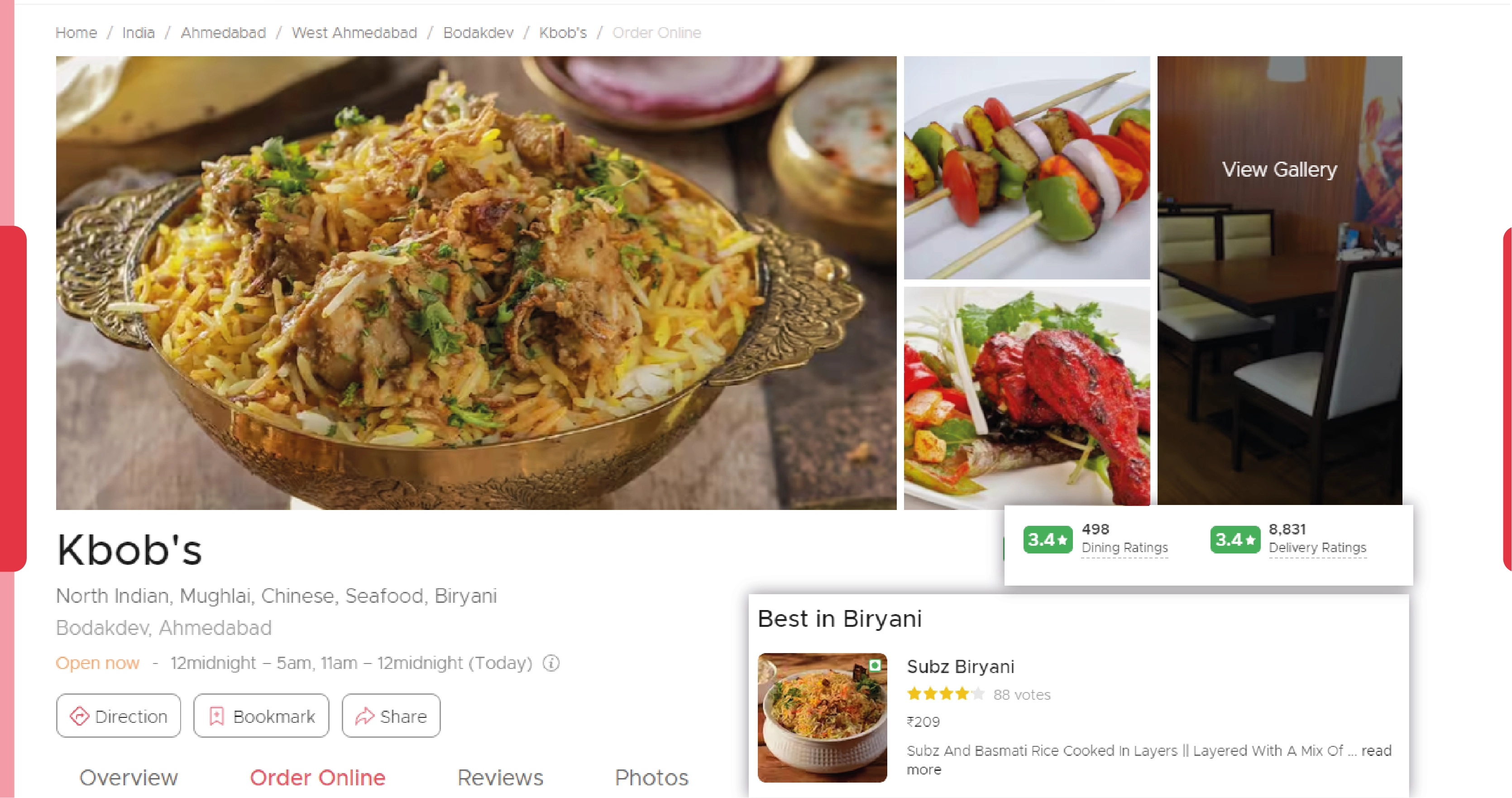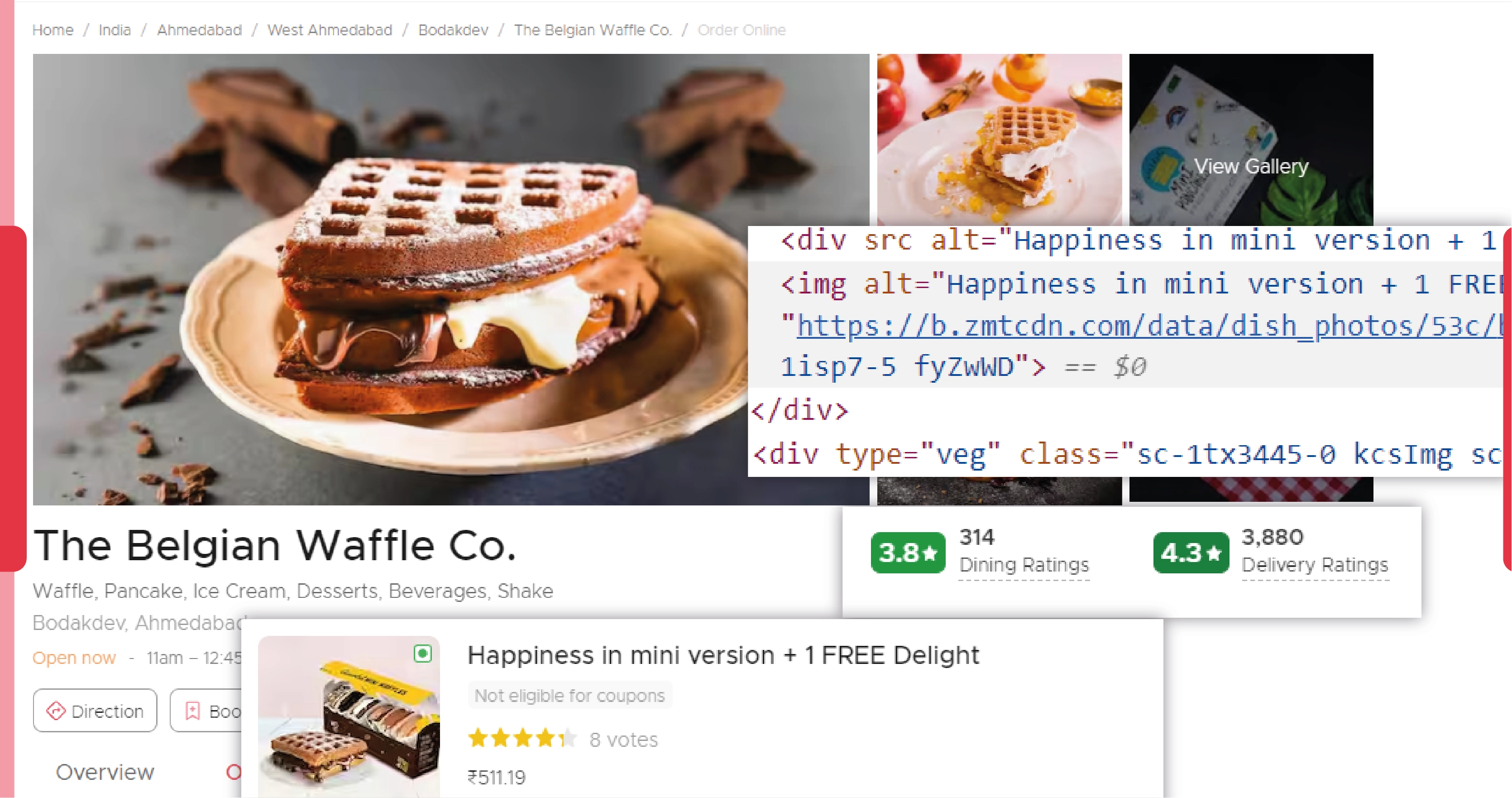

Introduction
In the dynamic food and beverage industry, Cloud Kitchens have revolutionized the business landscape. These delivery-only kitchens are tailored to meet the surging demand for online food delivery, offering unparalleled convenience and variety. One of the critical aspects of running a successful Cloud Kitchen is leveraging data to make informed decisions. Zomato, one of the leading food delivery platforms, provides a wealth of data that can be instrumental in optimizing Cloud Kitchen operations. By utilizing Zomato restaurant data scraping, Cloud Kitchens can gain valuable insights into market trends, customer preferences, pricing strategies, and competitive analysis. This blog will explore how scraping Zomato restaurant data can significantly enhance Cloud Kitchen operations.
Understanding Zomato Food Delivery Data Scraping

What is Zomato Data Scraping?
Zomato restaurant data scraping involves extracting information from the Zomato platform using automated tools or scripts. This process allows businesses to gather data on various aspects, including restaurant listings, menu items, prices, customer reviews, ratings, and delivery times. By systematically collecting and analyzing this data, Cloud Kitchens can gain actionable insights to improve their operations.
Tools for Zomato Data Scraping

Several web scraping tools can be employed to Zomato data scraping for Cloud Kitchen. Some popular tools include:
- BeautifulSoup: A Python library for parsing HTML and XML documents.
- Scrapy: An open-source web crawling framework for Python.
- Selenium: A browser automation tool that is useful for scraping dynamic web pages.
- Instant Data Scraper: A browser extension for quickly extracting data from websites without writing code.
Benefits of Scraping Zomato Restaurant Data for Cloud Kitchens
Market Research

Understanding Customer Preferences
By scraping Zomato restaurant data, Cloud Kitchens can analyze customer reviews and ratings to understand what diners like and dislike. This information can be used to tailor menu offerings to meet customer expectations better.
Identifying Popular Dishes
Cloud Kitchens can identify trending dishes and popular cuisines by analyzing menu data from top-rated restaurants. This helps in designing a menu that aligns with current market trends, attracting more customers.
Analyzing Competitor Strategies
Zomato data collection allows Cloud Kitchens to monitor their competitors' pricing strategies, promotions, and customer feedback. This competitive analysis helps in positioning the Cloud Kitchen more effectively in the market.
Pricing Strategies

Dynamic Pricing
Zomato data scraper enables Cloud Kitchens to implement dynamic pricing strategies by monitoring competitor prices and demand fluctuations. Adjusting prices in real-time based on market conditions can maximize revenue and attract price-sensitive customers.
Price Comparison
By regularly doing Zomato data collection, Cloud Kitchens can conduct price comparisons to ensure they offer competitive rates. This helps in retaining existing customers and attracting new ones by providing better value for money.
Menu Optimization

Data-Driven Menu Design
Analyzing data from Zomato can reveal which menu items are most popular among customers. Cloud Kitchens can use this information to design a menu that features high-demand items, reducing waste and increasing sales.
Identifying Low-Performing Items
Web scraping restaurant data from Zomato helps in identifying menu items that are not performing well. Cloud Kitchens can decide to modify, replace, or remove these items to streamline operations and improve profitability.
Operational Efficiency

Demand Forecasting
By analyzing historical data from Zomato, Cloud Kitchens can forecast demand for specific dishes and adjust their inventory and staffing levels accordingly. This ensures that the kitchen operates efficiently, reducing food wastage and optimizing labor costs.
Enhancing Delivery Performance
Scraping data on delivery times and customer feedback can help Cloud Kitchens identify areas for improvement in their delivery process. Ensuring timely deliveries and high customer satisfaction can lead to repeat business and positive reviews.
Customer Engagement

Personalized Marketing
Zomato data scraping provides insights into customer preferences and behaviors, allowing Cloud Kitchens to create personalized marketing campaigns. Tailored promotions and targeted ads can increase customer engagement and loyalty.
Responding to Feedback
Monitoring customer reviews on Zomato helps Cloud Kitchens address negative feedback promptly and improve their service. Engaging with customers and showing responsiveness can enhance the kitchen's reputation and attract more business.
Step-by-Step Guide to Scraping Zomato Data

Identify Data Requirements:
Determine the specific data points you need, such as restaurant names, menu items, prices, ratings, and reviews.
Choose the Right Tools:
Select web scraping tools that suit your requirements. For instance, use BeautifulSoup for simple HTML parsing, Scrapy for large-scale scraping, or Selenium for dynamic content.
Set Up the Scraper:
Write a script to scrape the desired data from Zomato. Ensure that the script can handle pagination and extract data efficiently.
Data Cleaning and Storage:
Clean the scraped data to remove duplicates and irrelevant information. Store the data in a structured format, such as CSV or a database, for easy analysis.
Data Analysis:
Use data analysis tools like Pandas and NumPy to analyze the scraped data. Visualize the insights using tools like Matplotlib or Tableau.
Implement Insights:
Apply the insights gained from the data analysis to optimize menu offerings, pricing strategies, and marketing campaigns.
The Python Code
To scrape Zomato restaurant data using Python, we'll use popular libraries such as BeautifulSoup and Requests. Note that scraping should be done responsibly and ethically, respecting the website's terms of service. Here's an example Python script to scrape some basic data like restaurant names, ratings, and addresses from Zomato:
Prerequisites
Python 3.x installed.
Libraries: Install the necessary libraries using pip:
pip install requests beautifulsoup4Python Script

Explanation
- BASE_URL: The URL structure for Zomato's restaurant listings. Update {location} and {page_number} with appropriate values.
- scrape_page(url): This function takes a URL and scrapes the restaurant data from that page.
- scrape_zomato(location, pages): This function iterates through the pages of the location and calls scrape_page for each page.
- Main Execution Block: The if __name__ == "__main__": block sets the location and number of pages to scrape, calls scrape_zomato, and optionally saves the results to a CSV file.
Conclusion
Leveraging Zomato food delivery data scraping can significantly enhance Cloud Kitchen operations by providing valuable insights into market trends, customer preferences, pricing strategies, and competitor analysis. By utilizing web scraping tools like BeautifulSoup, Scrapy, Selenium, and Instant Data Scraper, Cloud Kitchens can automate the process of data extraction and gain access to real-time information. This data can be used to optimize menu offerings, implement dynamic pricing, improve operational efficiency, and engage with customers effectively.
In the highly competitive and dynamic food industry, staying ahead of the curve requires data-driven decision-making. By scraping Zomato restaurant data from Real Data API, Cloud Kitchens can unlock the potential to make informed decisions, drive growth, and achieve long-term success. Start leveraging Zomato data scraping for your Cloud Kitchen today with Real Data API and transform your operations with actionable insights!















